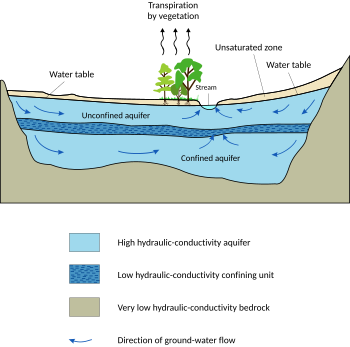Pesticides Summary 13 additive that can infiltrate into groundwater from leaking fuel tanks, was not detected in any sample (table A2). Five pesticides and related compounds (including three pesticide degradates) were detected in water from six wells (table A7), but none of the concentrations exceeded MCLs. Four of the samples containing pesticides were from sand and gravel aquifers, and two were from bedrock aquifers. Caffeine, which is not a pesticide, is measured as part of the pesticide analyses and can be an indicator of human wastes, and was detected in one sample (table A7). The pesticide compound that was detected most frequently was CIAT (2-chloro-4-isopropylamino-6-amino-s-triazine, also called deethylatrazine) and was detected in four samples at estimated concentrations ranging from E0.002 to E0.003 µg/L. CIAT is a degradation product of the herbicide atrazine. The maximum concentration of any pesticide related product was 0.03 µg/L (metolachlor ESA, a degradation product of the herbicide metolachlor). Three pesticides and degradates were detected once: Metolachlor OA (a degradation product of metolachlor) (0.02 µg/L), cis-permethrin (estimate 0.001µg/L), and prometon (0.01 µg/L). No Federal MCLs currently (2010) have been established for pesticide degradation products, and no pesticide concentration exceeded USEPA or NYSDOH MCLs. These trace-level detections of pesticides are similar to those reported by Phillips and others (1999), Eckhardt and Stackelberg (1995), and Eckhardt and others (2001) from studies of pesticides in groundwater throughout New York State.Pesticides
http://forums2.gardenweb.com/forums/load/cornucop/msg0522215024086.html?40
Another great forum speaking out regarding our unhealthy enviroment.
After moving out of the city into a rural setting we felt safe from airborn and water pollutants,
but soon found out farmers fields across the street were being heavily sprayed with roundup.
Apple farmers also heavily spray pesticides along the shores of Lake Ontario.It's a beautiful area
but whats in the ground seeping into your well ?
Aquifer water flow within limestone layers reaching residential shore wells gets flushes regularly thru heavy rains.
Realizing surface contaminates seep into the ground and eventually,reach the water table.
Aquifer
Typical aquifer cross-section
An aquifer is an underground layer of water-bearing permeable rock or unconsolidated materials (gravel, sand, or silt) from which groundwatercan be extracted using a water well. The study of water flow in aquifers and the characterization of aquifers is called hydrogeology. Related terms include aquitard, which is a bed of low permeability along an aquifer,[1] and aquiclude (or aquifuge), which is a solid, impermeable area underlying or overlying an aquifer. If the impermeable area overlies the aquifer pressure could cause it to become a confined aquifer.
Groundwater Quality in the Eastern Lake Ontario Basin, New York, 2008
Groundwater characteristics are affected by the geology and the land use of the area. Shallow wells that tap sand and gravel aquifers are susceptible to contamination by several kinds of compounds, including volatile organic compounds (VOCs), pesticides, deicing chemicals, and nutrients from upgradient highways, industrial, agricultural, and residential areas. The movement of these contaminants to the water table through the soils and surficial sand and gravel can be relatively rapid. Bedrock wells that tap sandstone and shale aquifers in rural upland areas are generally less susceptible to contamination from industrial and urban sources, which are mainly in the valleys; but bedrock wells in lowland areas underlain by carbonate rock (limestone and dolostone) may be more vulnerable to contamination from surface runoff because infiltration rates and groundwater flow can be relatively rapid through solution features in the rock. Agricultural land upgradient of wells may be a potential source of contamination from fertilizers, pesticides, and fecal waste from livestock; lawns and residential septic systems also are a potential source of these contaminants. In addition to anthropogenic contaminants, the aquifers contain naturally derived elements that may diminish water quality, such as sodium, chloride, sulfate, iron, manganese, and trace elements such as arsenic; some also may contain hydrogen sulfide, methane, and radon gases from deep-lying sources.


No comments:
Post a Comment
Thanks for Commenting on Insight Planet Earth